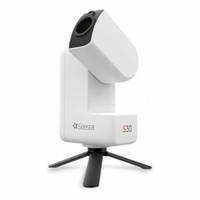I’m pairing my smartphone with this smart telescope for the next solar eclipse this weekend
You won't spend a fortune on it, either
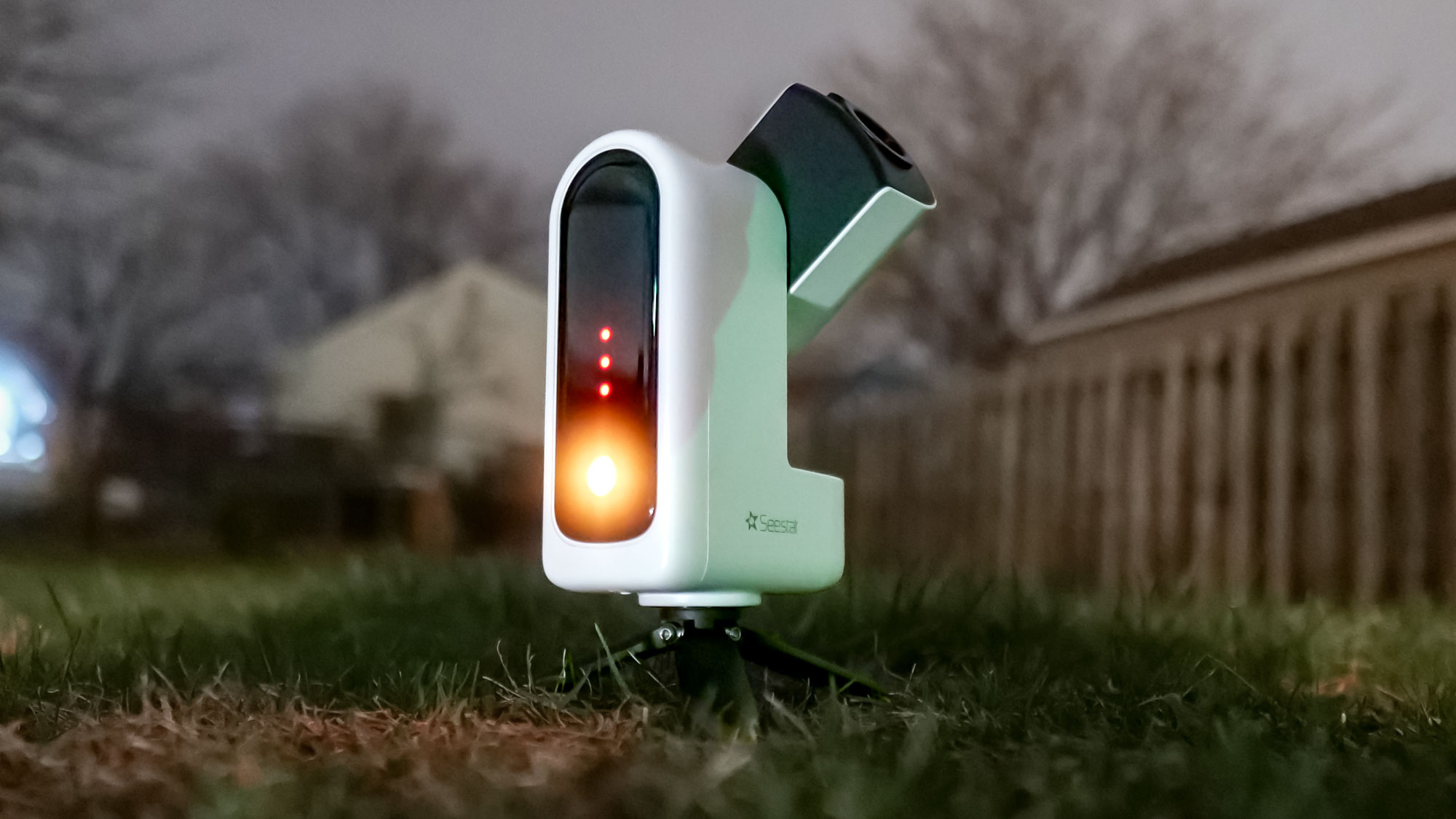
It’s been almost a year since the last visible solar eclipse in the U.S., where I took some of the best phones at the time and put them through a face-off to see which one gets the best results. But with the next solar eclipse happening this weekend, a partial one, I plan on using a smart telescope instead to get me much closer to the action.
The next partial eclipse will happen in the early hours of March 29, with it being visible mostly in the northeast starting at 5:58 a.m. EDT according to the U.S. Naval Observatory. Unlike the last one I saw last year, this one is actually going to be a partial one — but I still intend on capturing it.
I plan to capture the partial solar eclipse by pairing my phone with the Seestar S30, a compact smart telescope that I’ve been using for over a month to capture my favorite galaxies, nebulas, planets, and other deep space objects. Here’s why it’s my new favorite smart telescope.
You'll be a pro in no time at all with the Seestar S30 smart telescope, which features a compact design that can be carried around easily to image galaxies, nebulas, planets, and much more with ease.
Astrophotography made easy
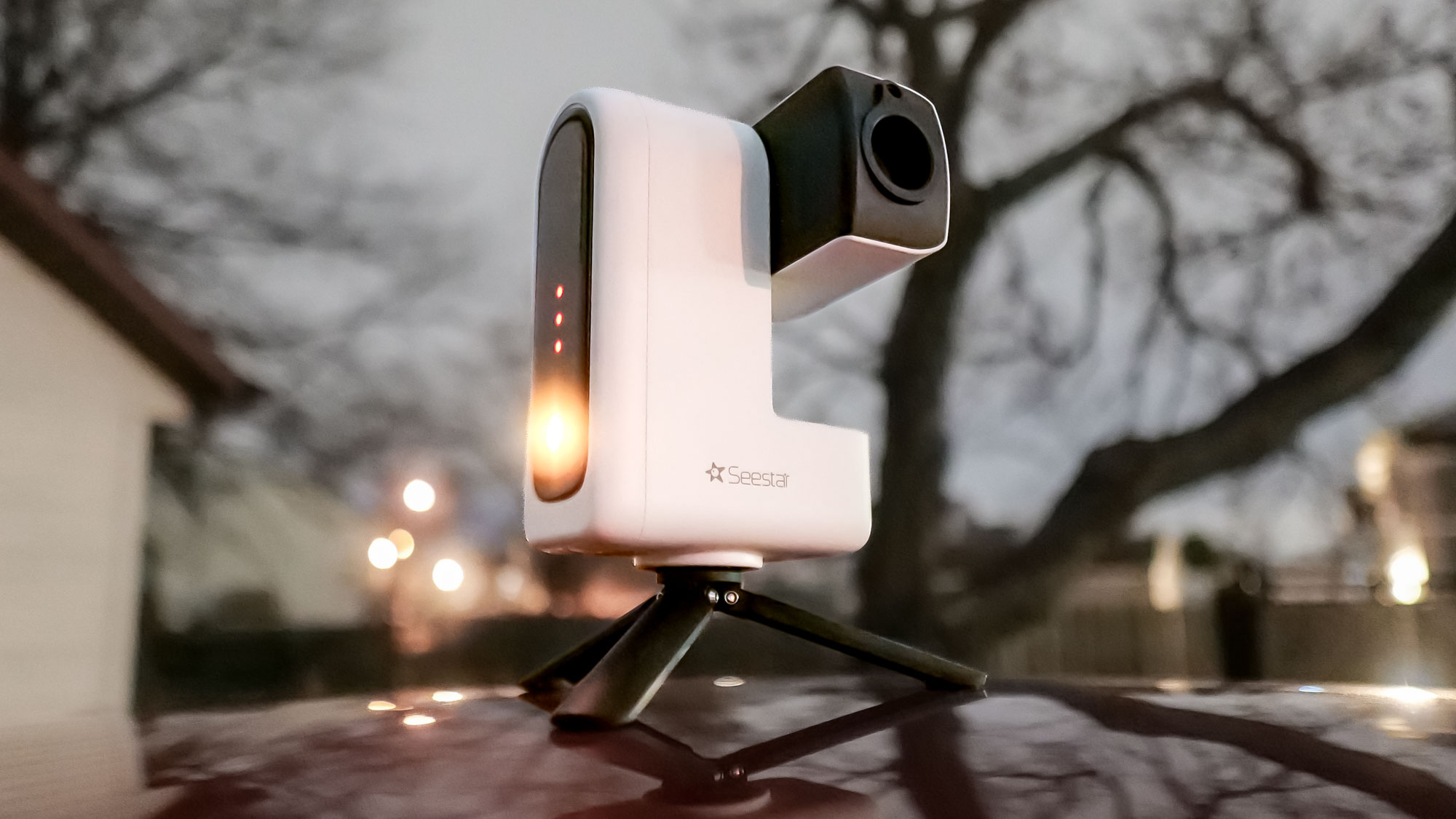
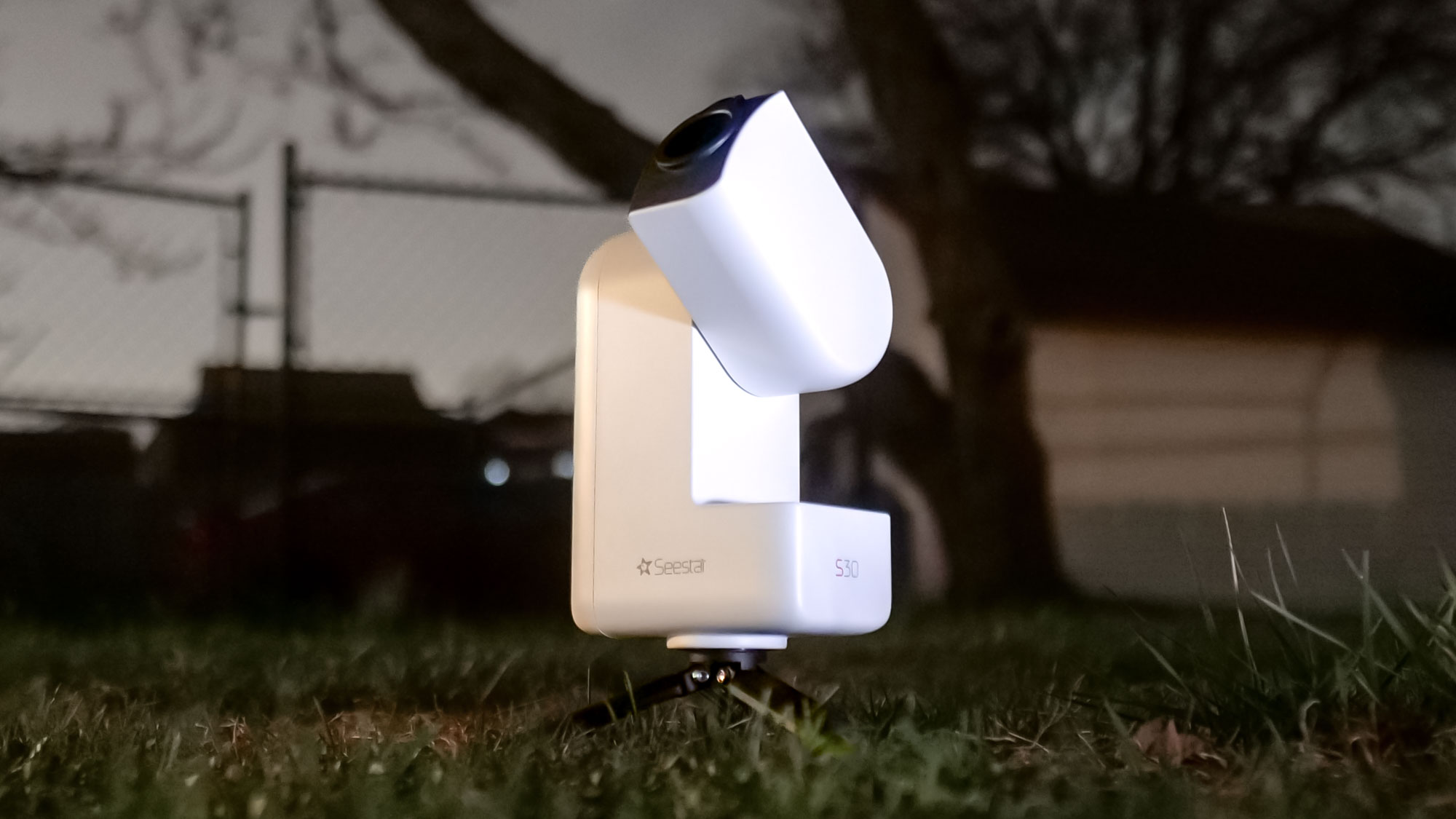
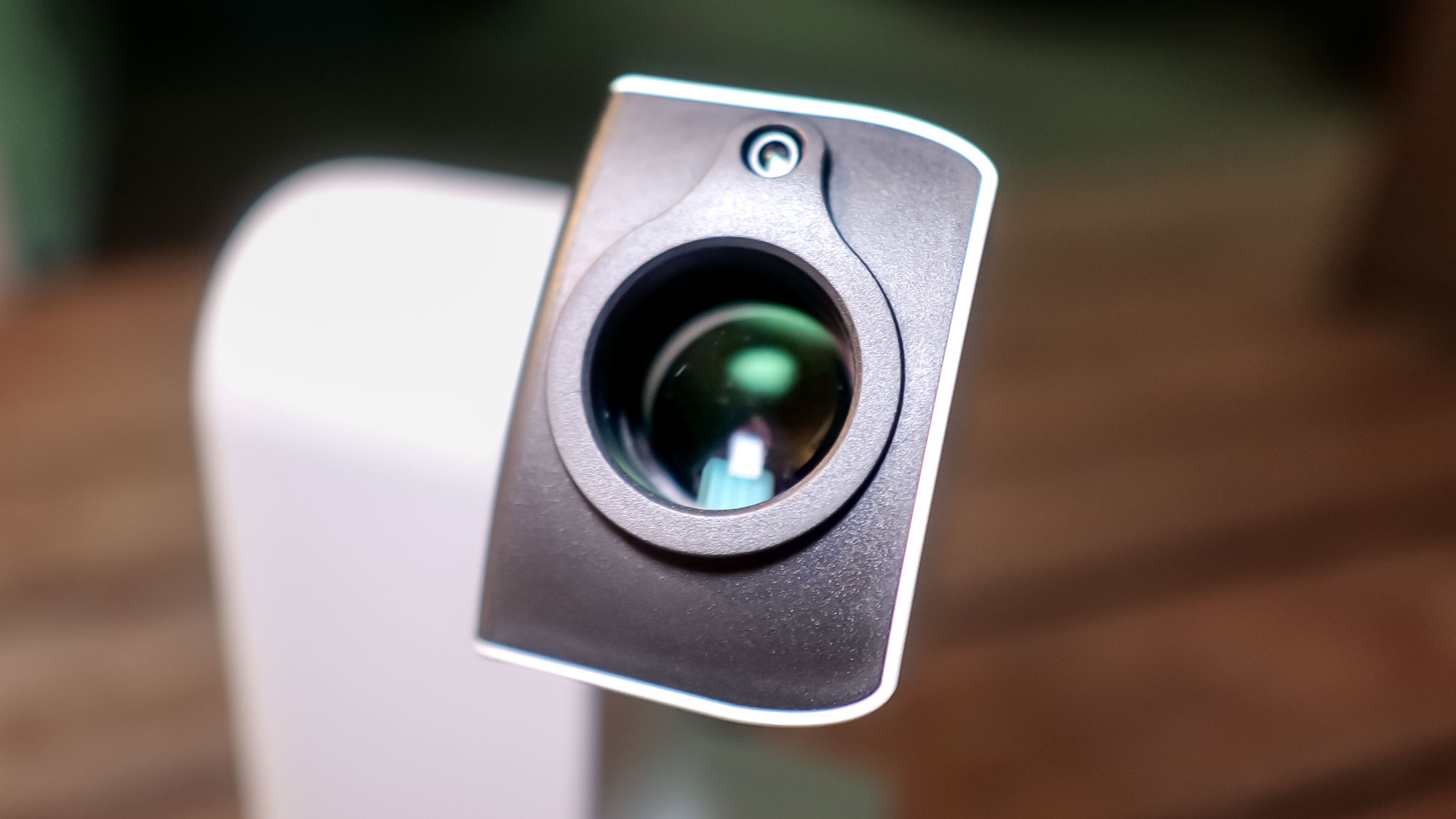

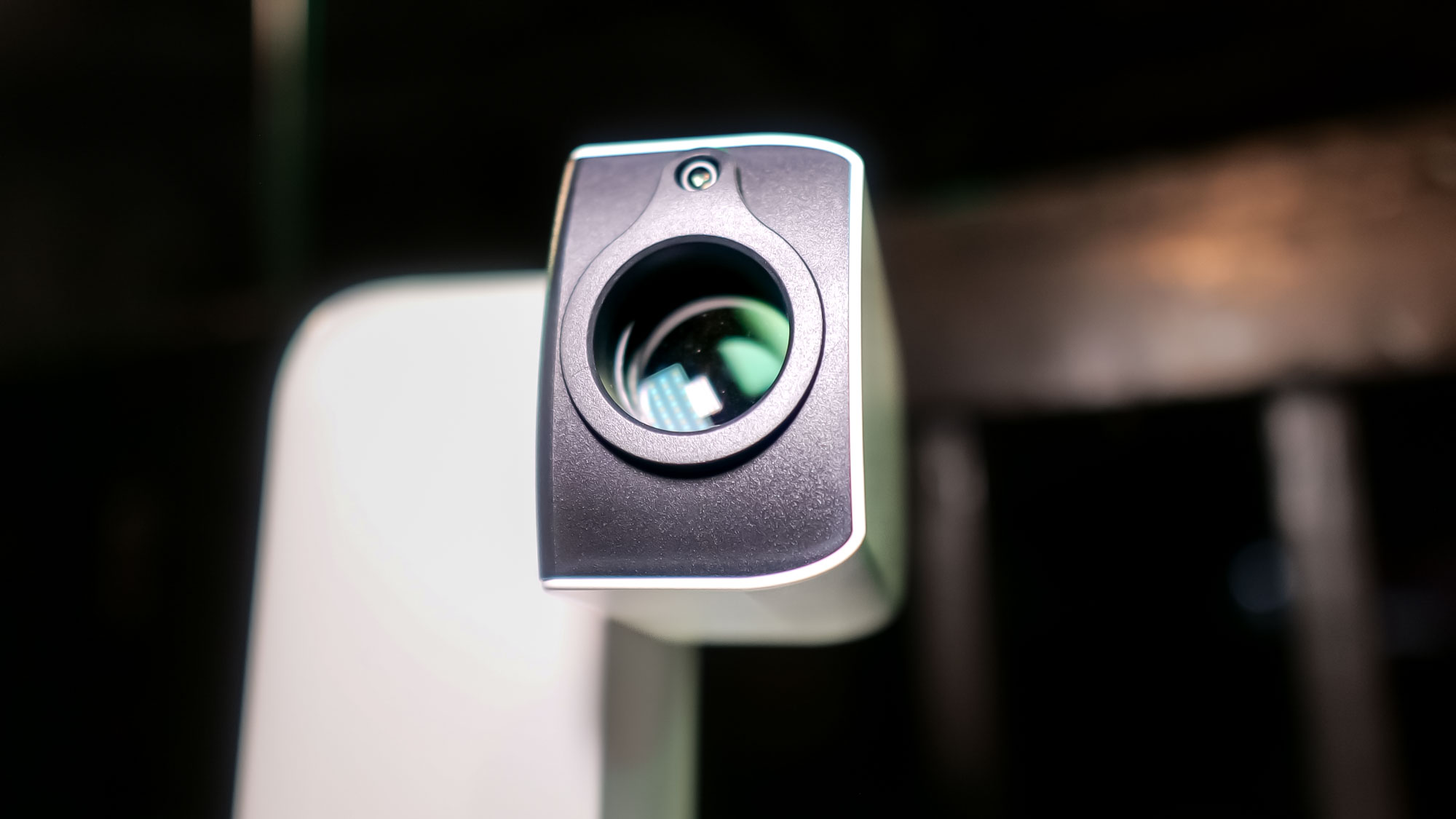
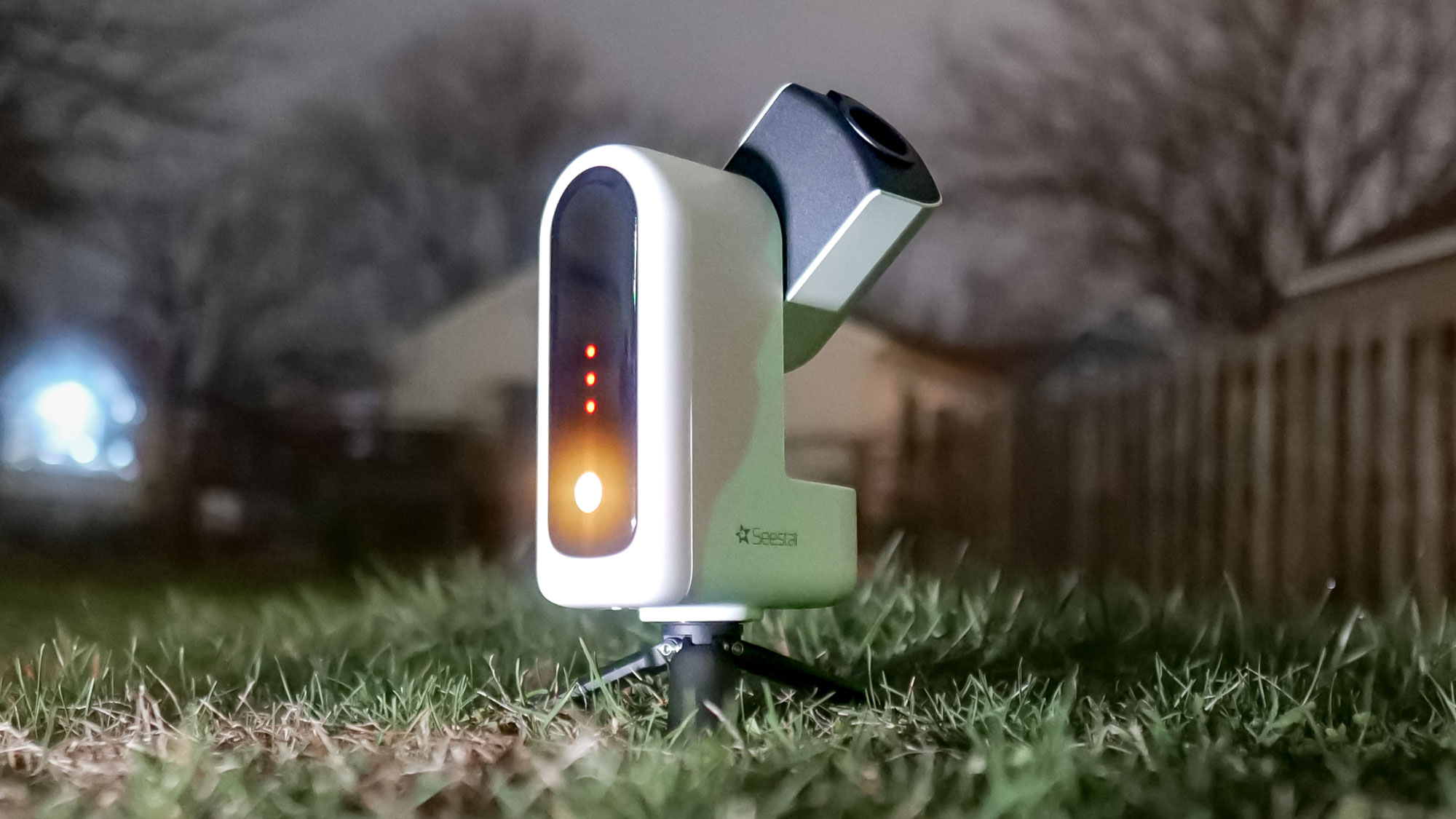
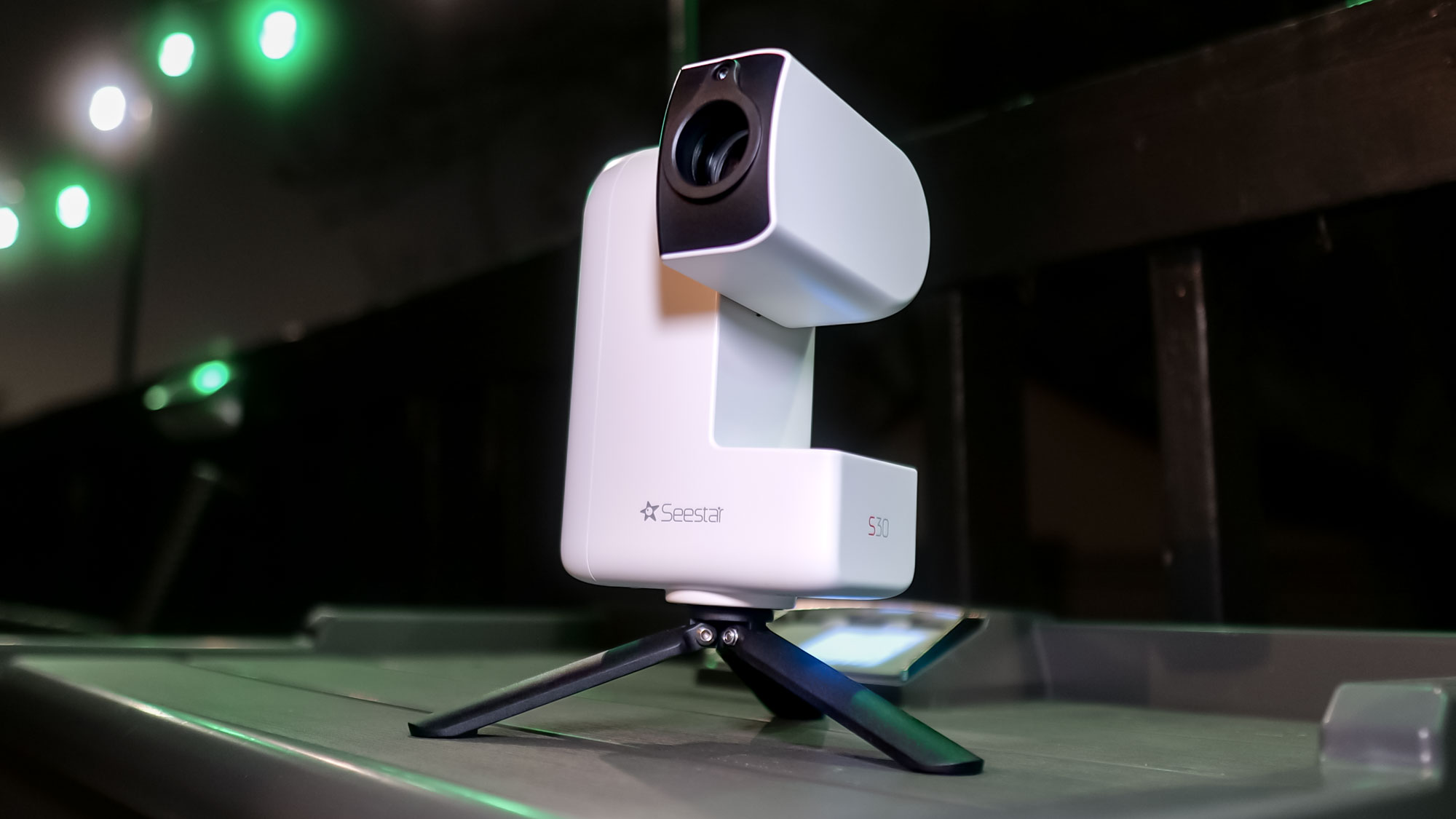
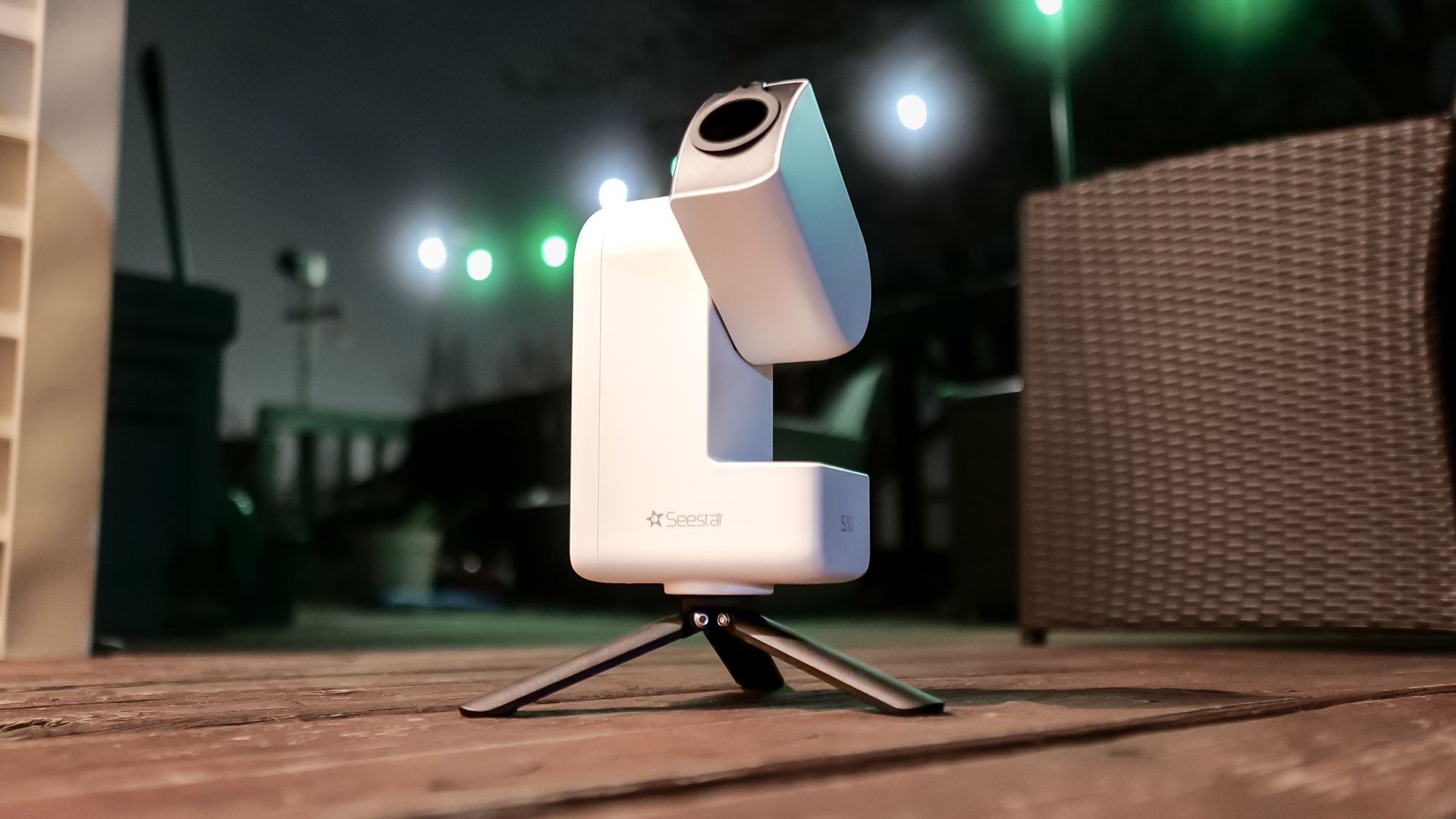
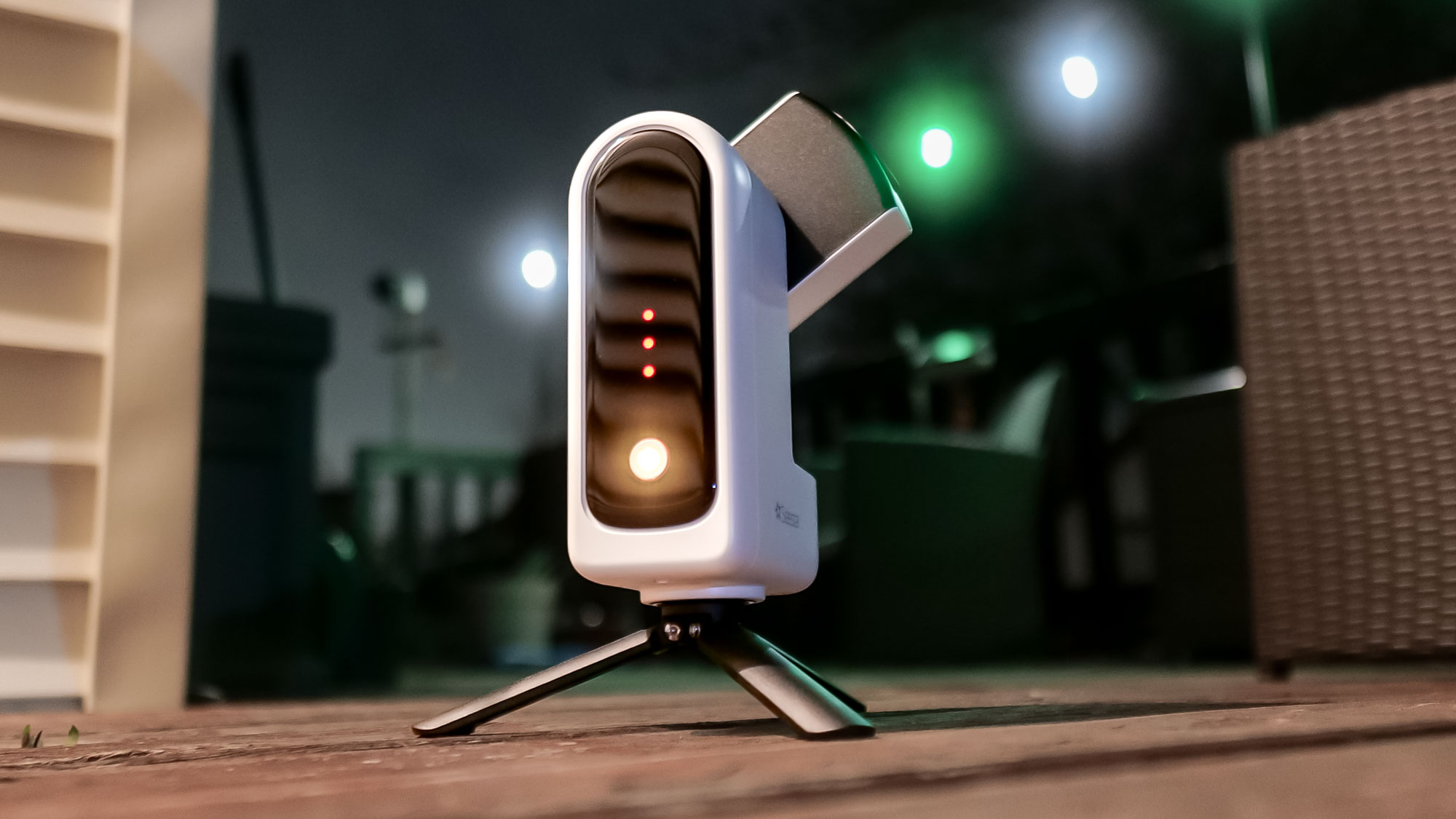
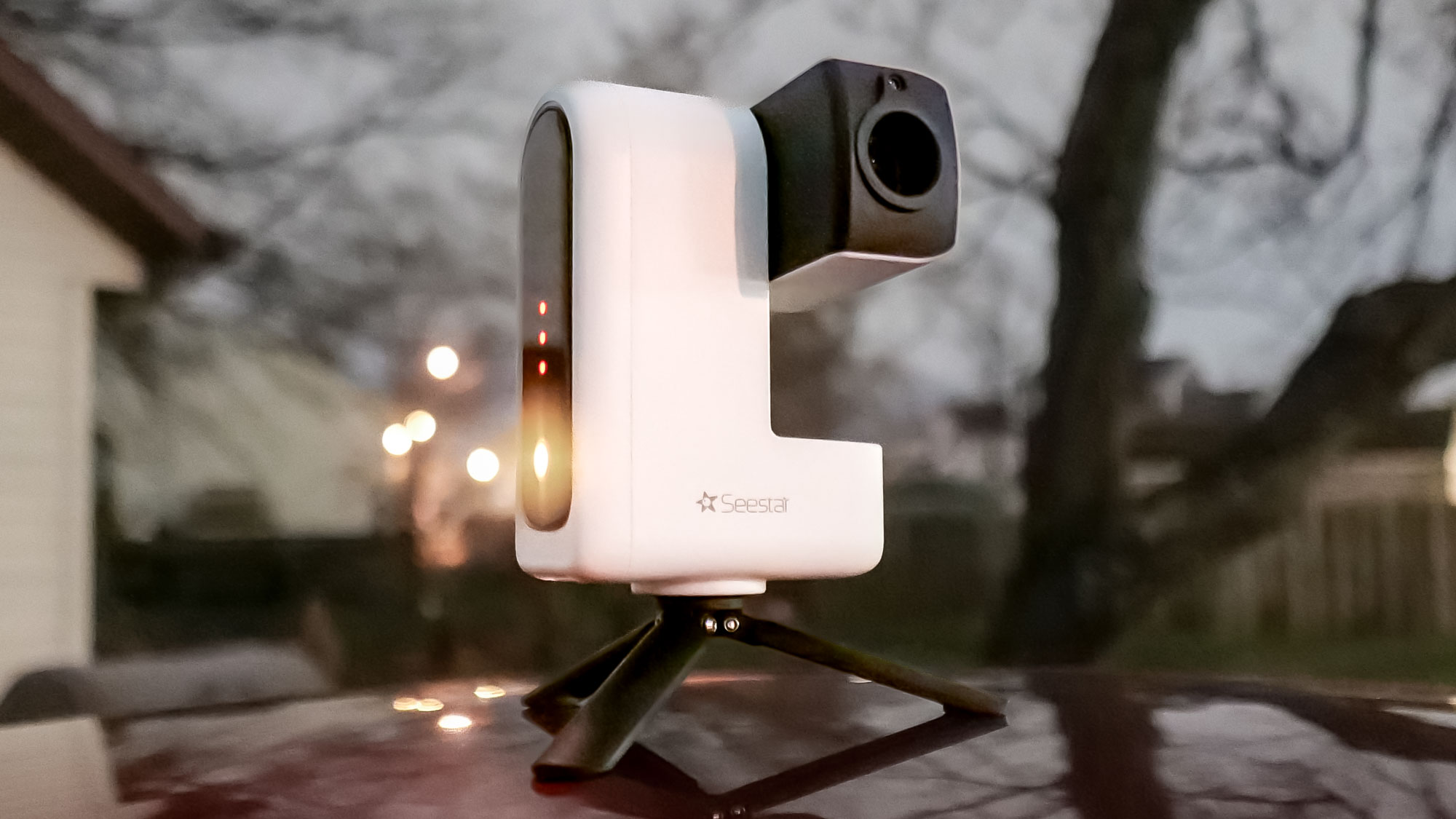

If you’ve ever tried to capture astrophotography with a standard telescope, you know how much of a pain it is to set up. Not only do you have to lug around a giant sized telescope, but it requires the necessary motorized tracking components to properly perform long exposures. The Seestar S30 takes away all of the hassle because I literally turn it on, pair it with my phone, and then select my target.
Thanks to its compact size, which is much smaller than the previous Seestar S50 I’ve tested, I can easily carry it in my backpack. I’ve been able to perform continuous imaging for over two hours, so battery life is never a concern.
Honestly, it’s the perfect example of how an existing tech gadget can become exponentially better with the ‘smart’ treatment. That’s because through the Seestar app, I can select what targets I want to image in the night sky — which it then will automatically calibrate itself and start imaging. You really just set it and forget it, that’s how easy it is to operate.
Outstanding results that make you look like a pro
You’ve probably seen photos captured by the James Webb Space Telescope and Hubble Space Telescope. They’re nothing short of breathtaking, but I can tell you that the Seestar S30 is just as good — especially for a beginner telescope.
Sign up to get the BEST of Tom's Guide direct to your inbox.
Get instant access to breaking news, the hottest reviews, great deals and helpful tips.
I’ve tested other smart telescopes like the Unistellar Odyssey Pro, which produces stunning images. However, you’ll end up spending several thousands on picking one up. Yet, I’d argue that the Seestar S30 performs just as good. Just take a look at some of my personal captures below that consist of the stacked image straight out of the telescope, along with my own personal edited ones.
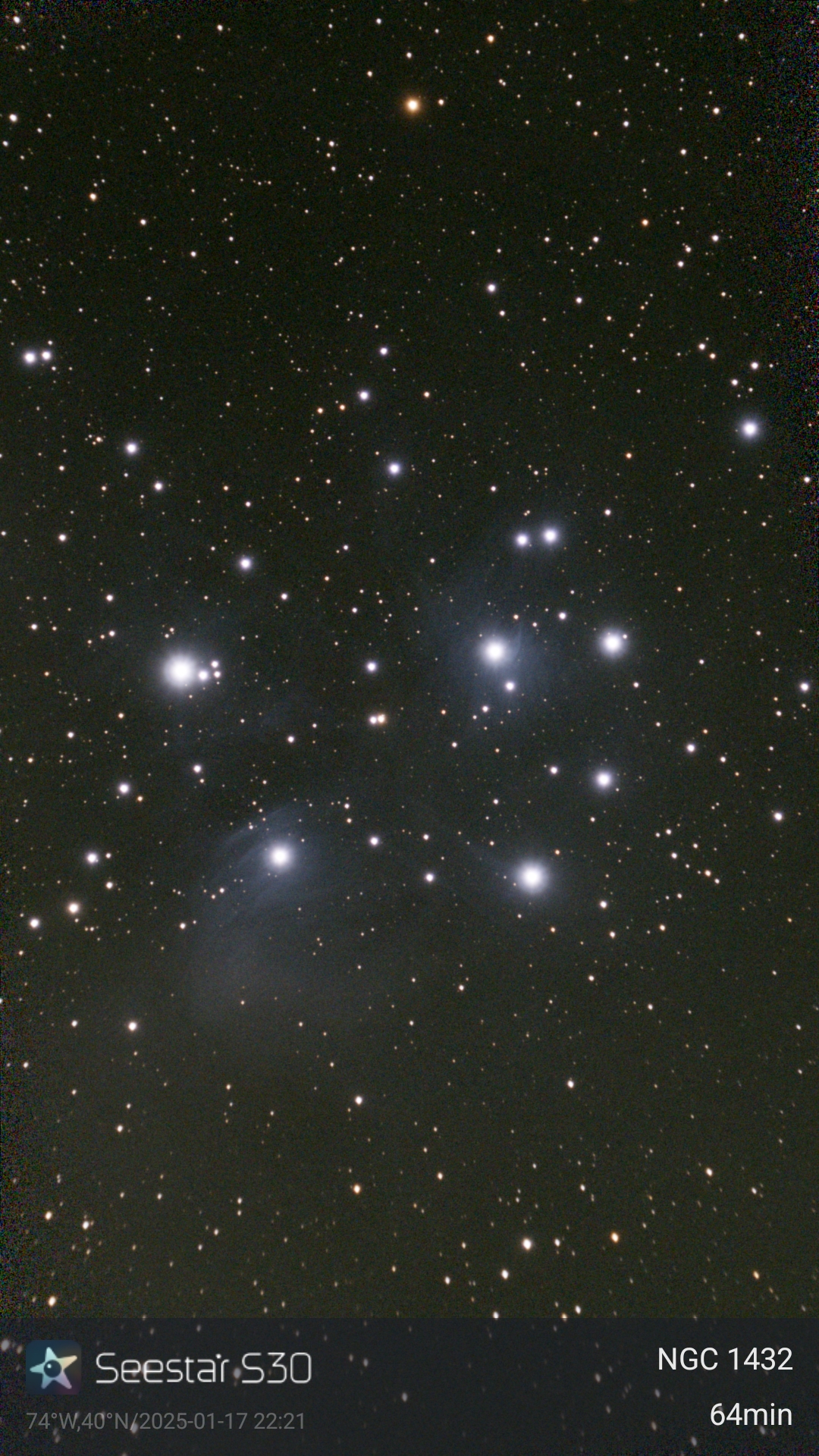
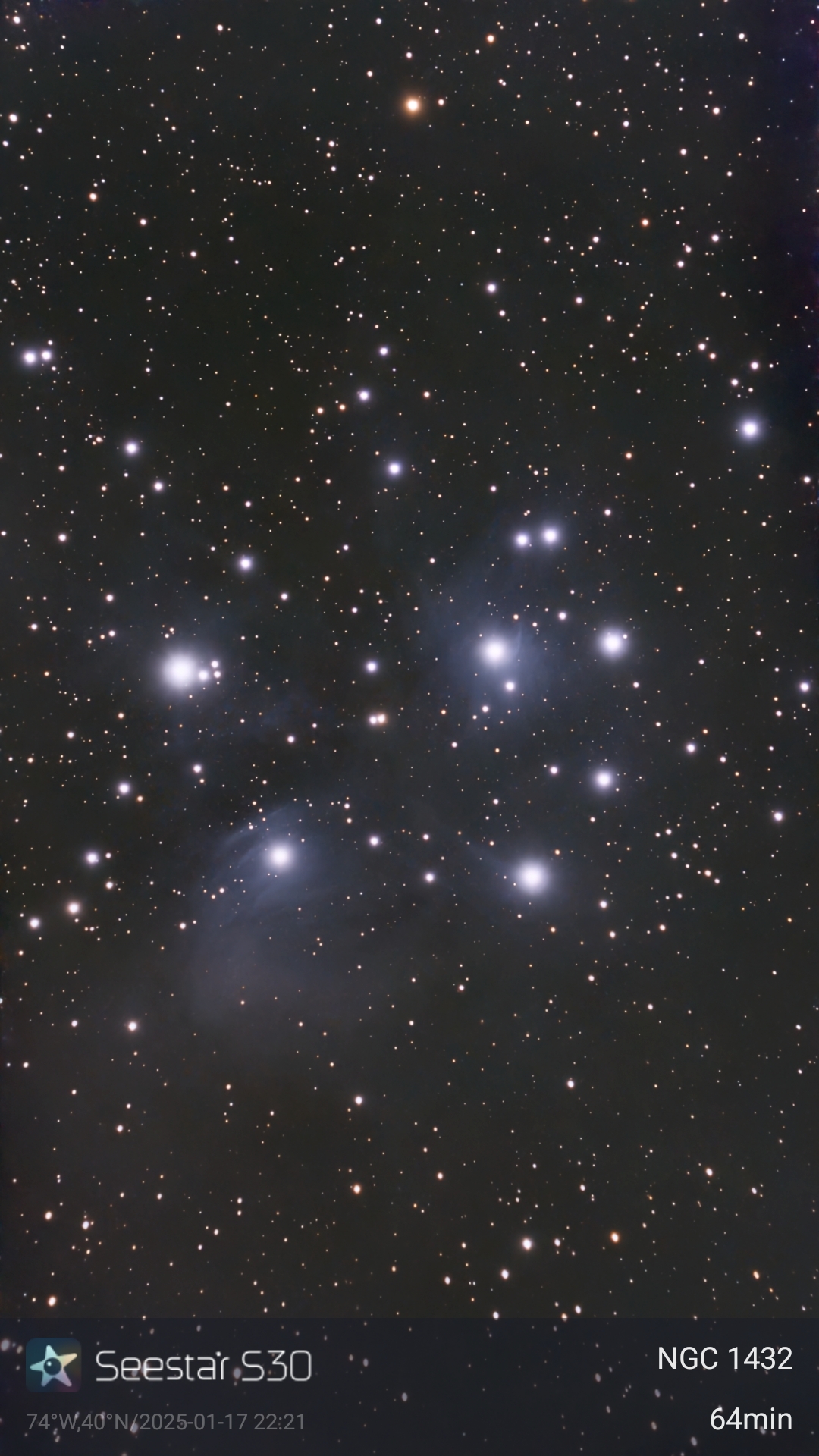
M45 the Pleiades is one of my favorite targets living in the northeast, especially when this famous Seven Sisters star cluster is visible to the naked eye. The Seestar S30 manages to capture the entire cluster in the frame, but I also like how I’m able to take the photo straight from the telescope and tweak it so that the wispy reflection nebulae around the brightest stars are more visible.
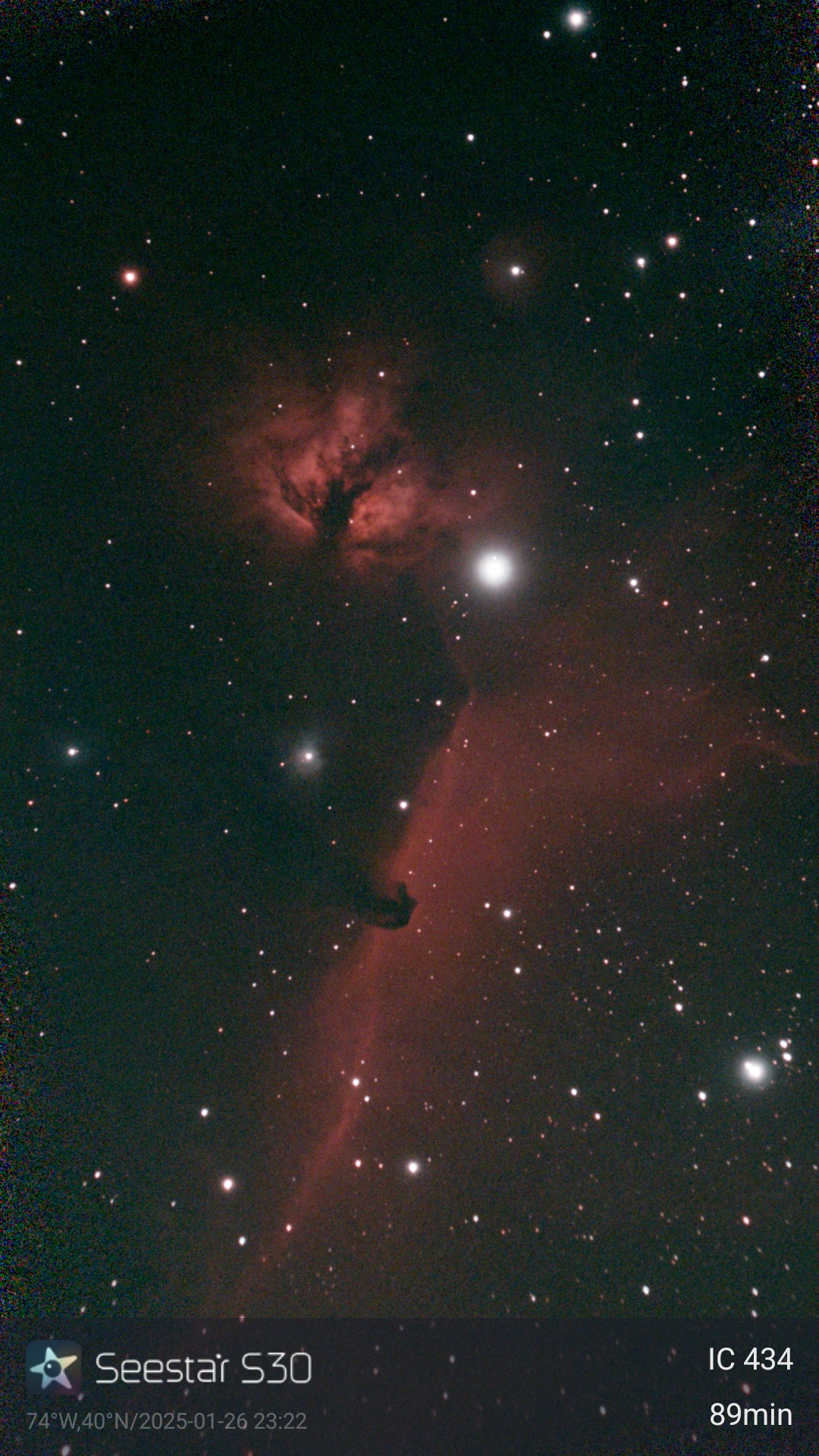
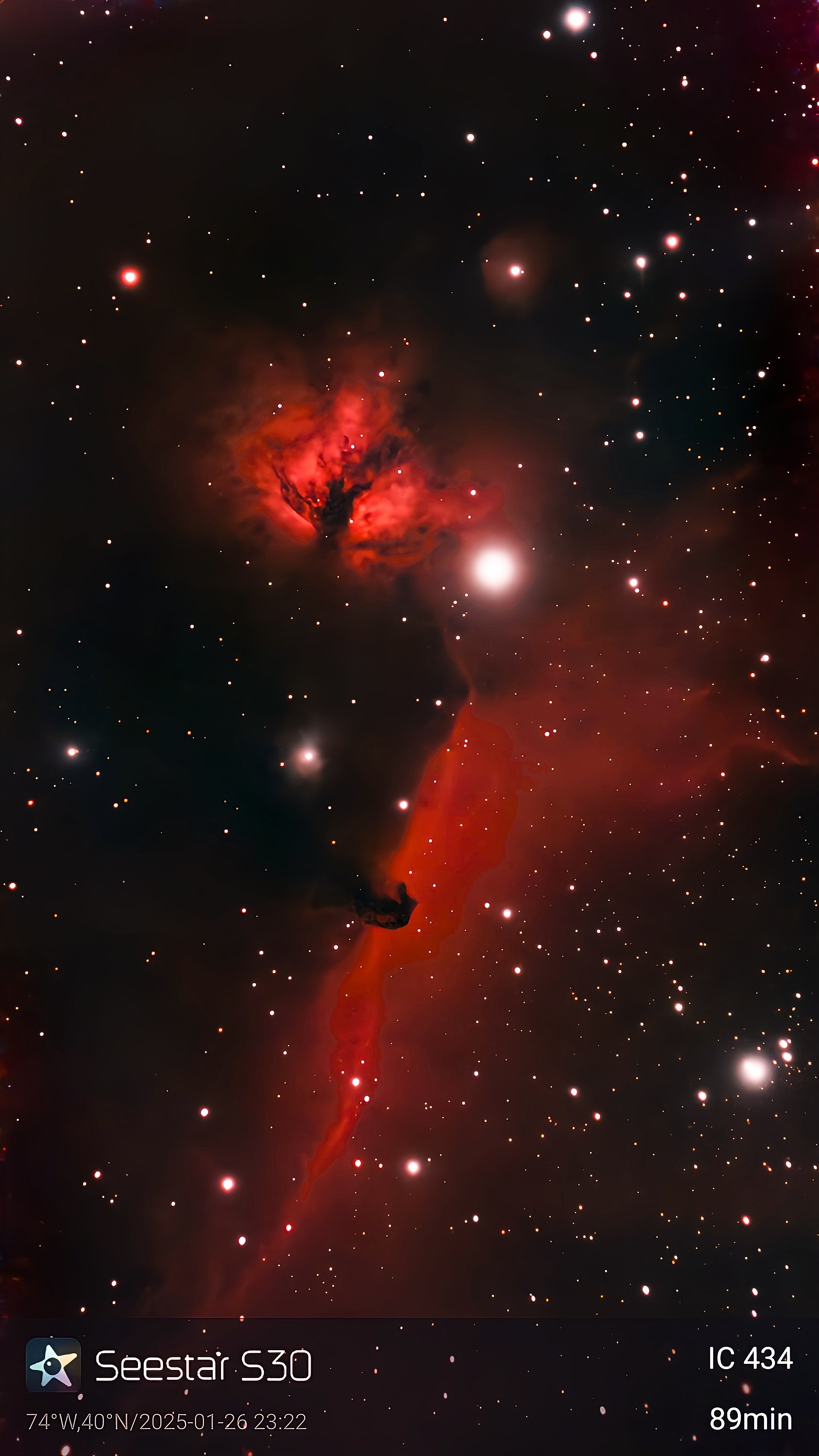
Thanks to its 150mm focal length, I’m able to capture both IC 434 the Horsehead Nebula and NGC 2024 the Flame Nebula. The initial shot looks noisy, but editing the image makes both of them appear sharper and clearer — while bringing out the red color of the nebulae.
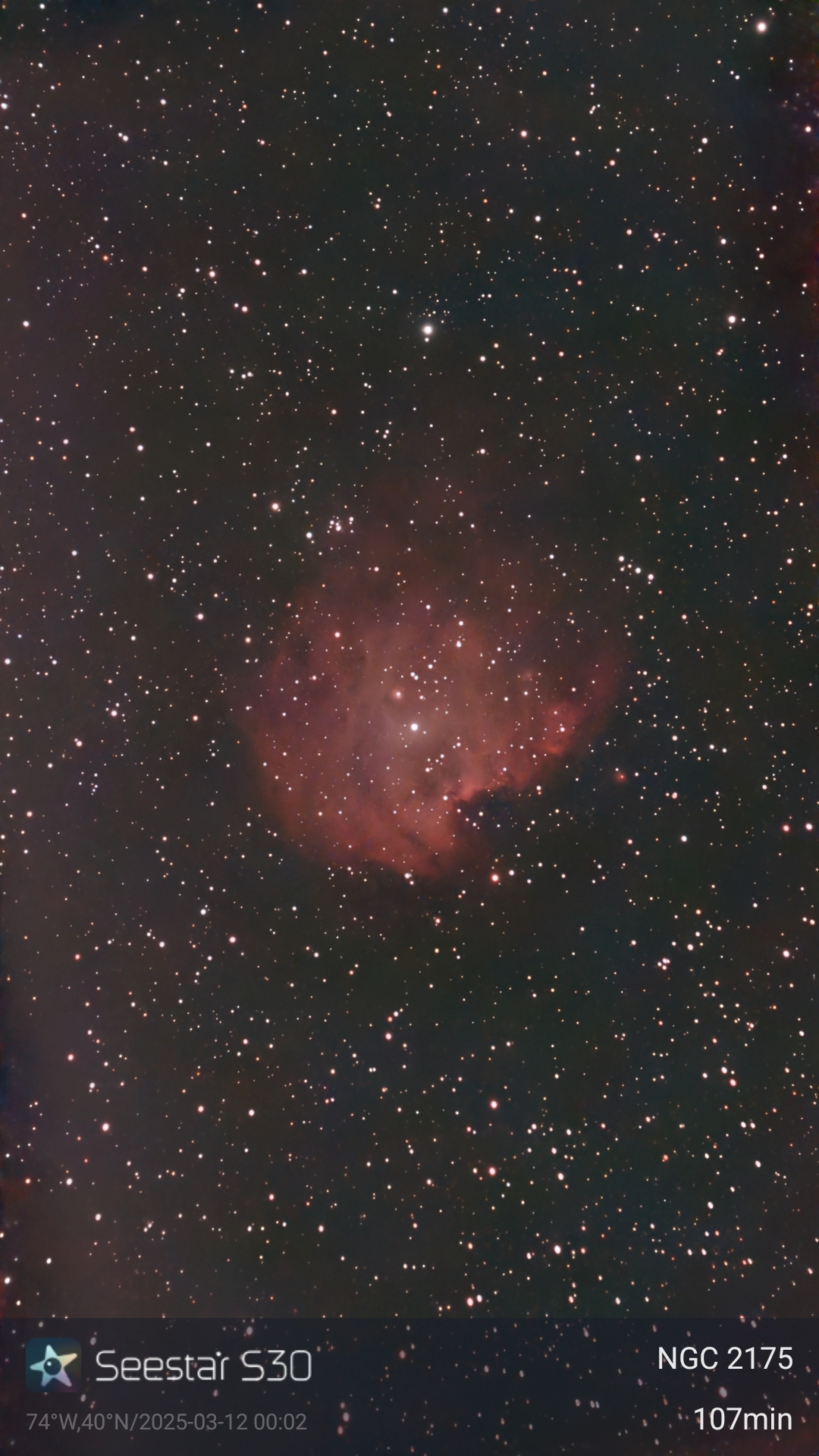
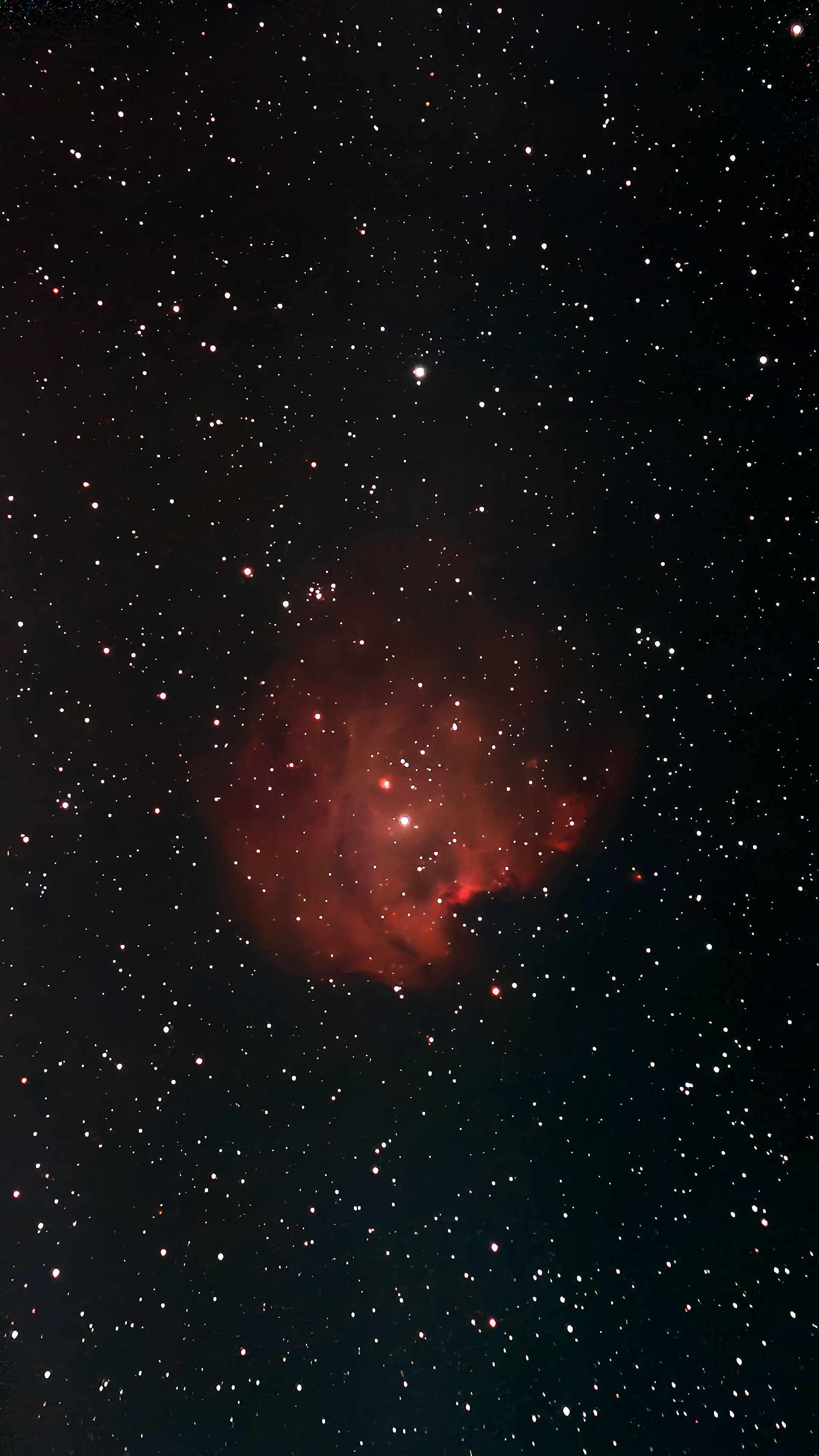
NGC 2174 the Monkey Head Nebula looks even more defined after toning down the highlights and increasing the contrast. I really like how the gases in the nebula have more definition after tweaking the shot.
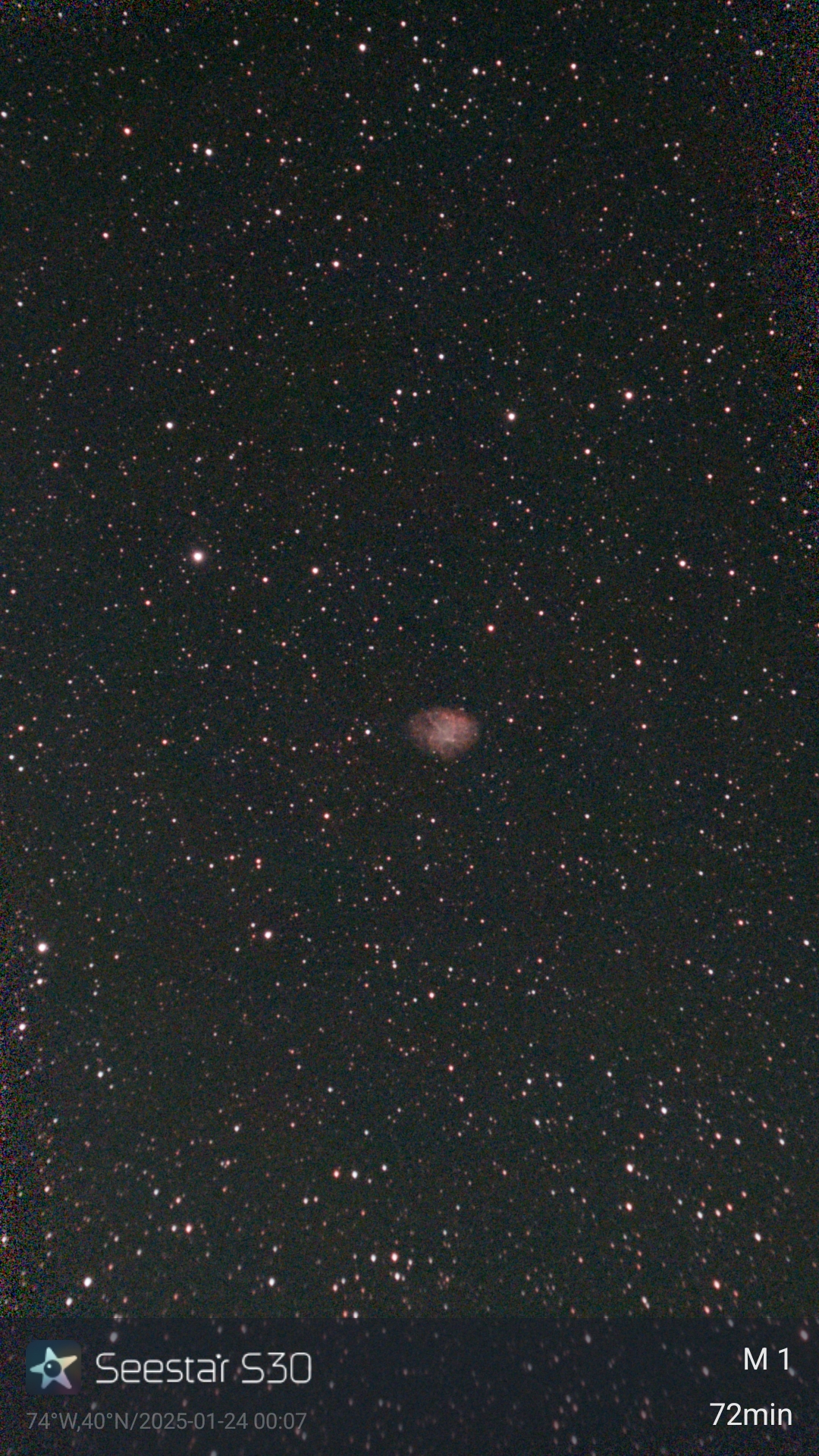
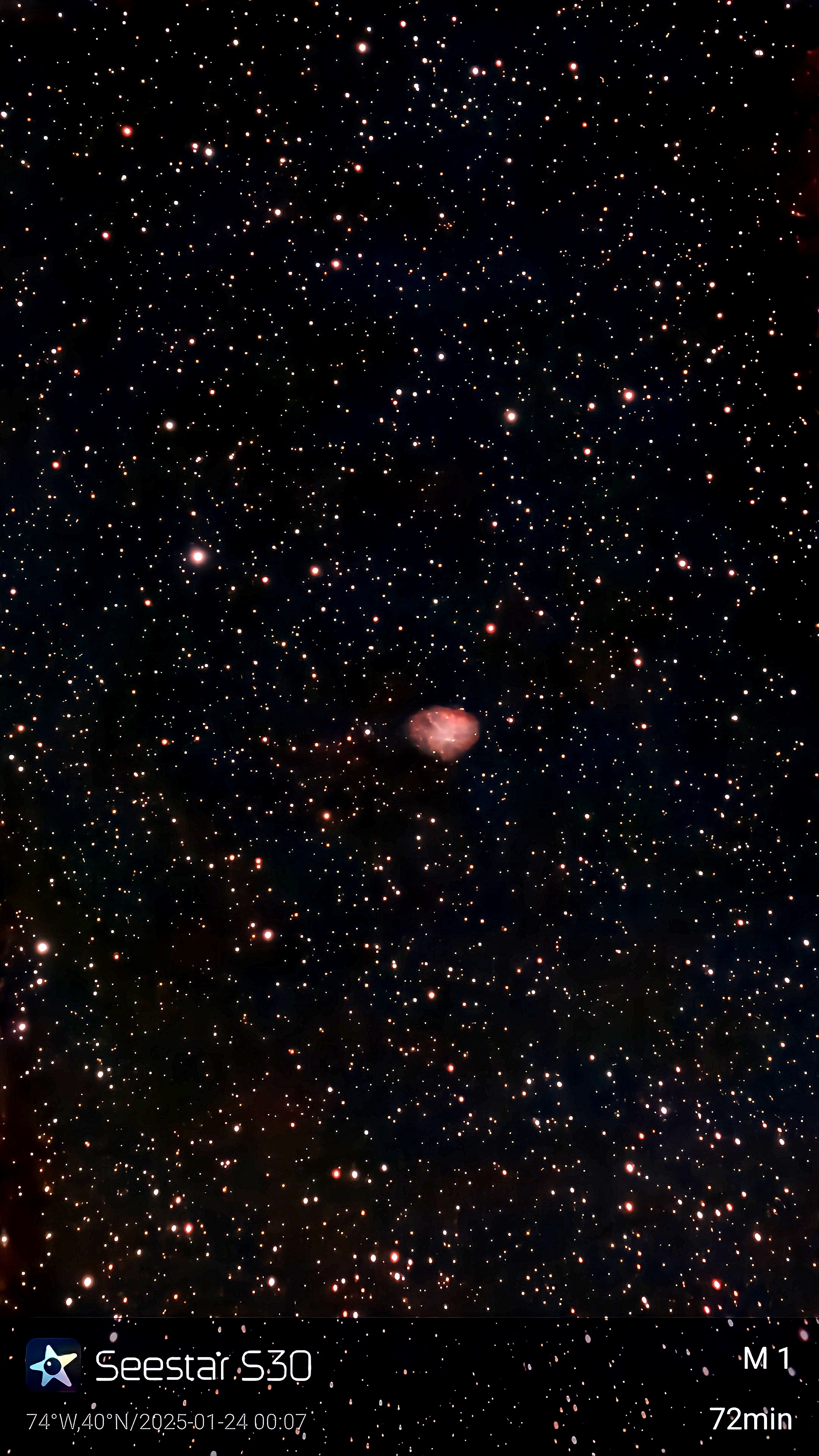
After 72 minutes of imaging, I’m able to gather enough data to reveal some of the details of M1 the Crab Nebula. The shot straight from the telescope makes it look like a fuzzy blob, but I’m able to edit it so that it’s clearer looking.
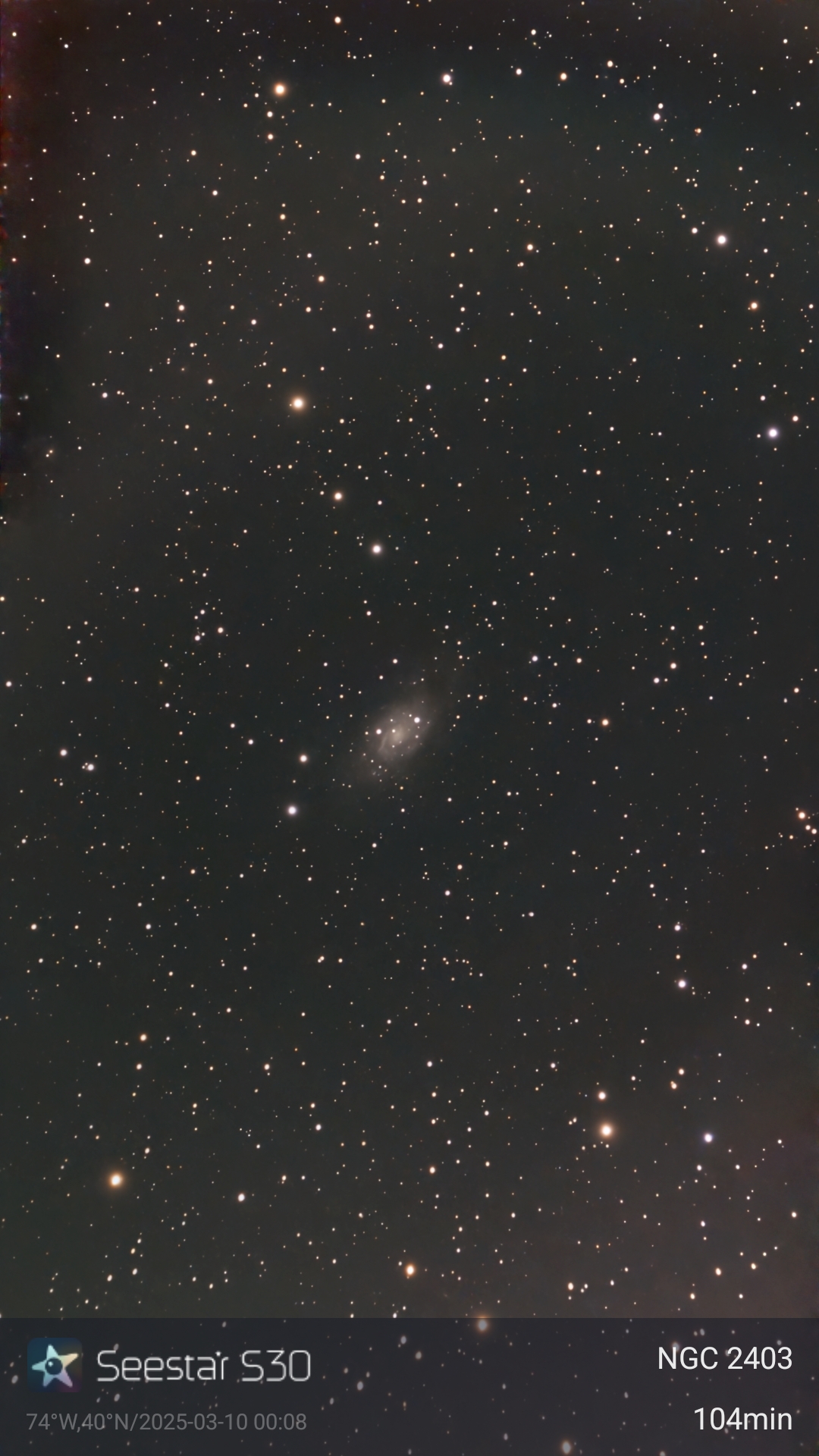
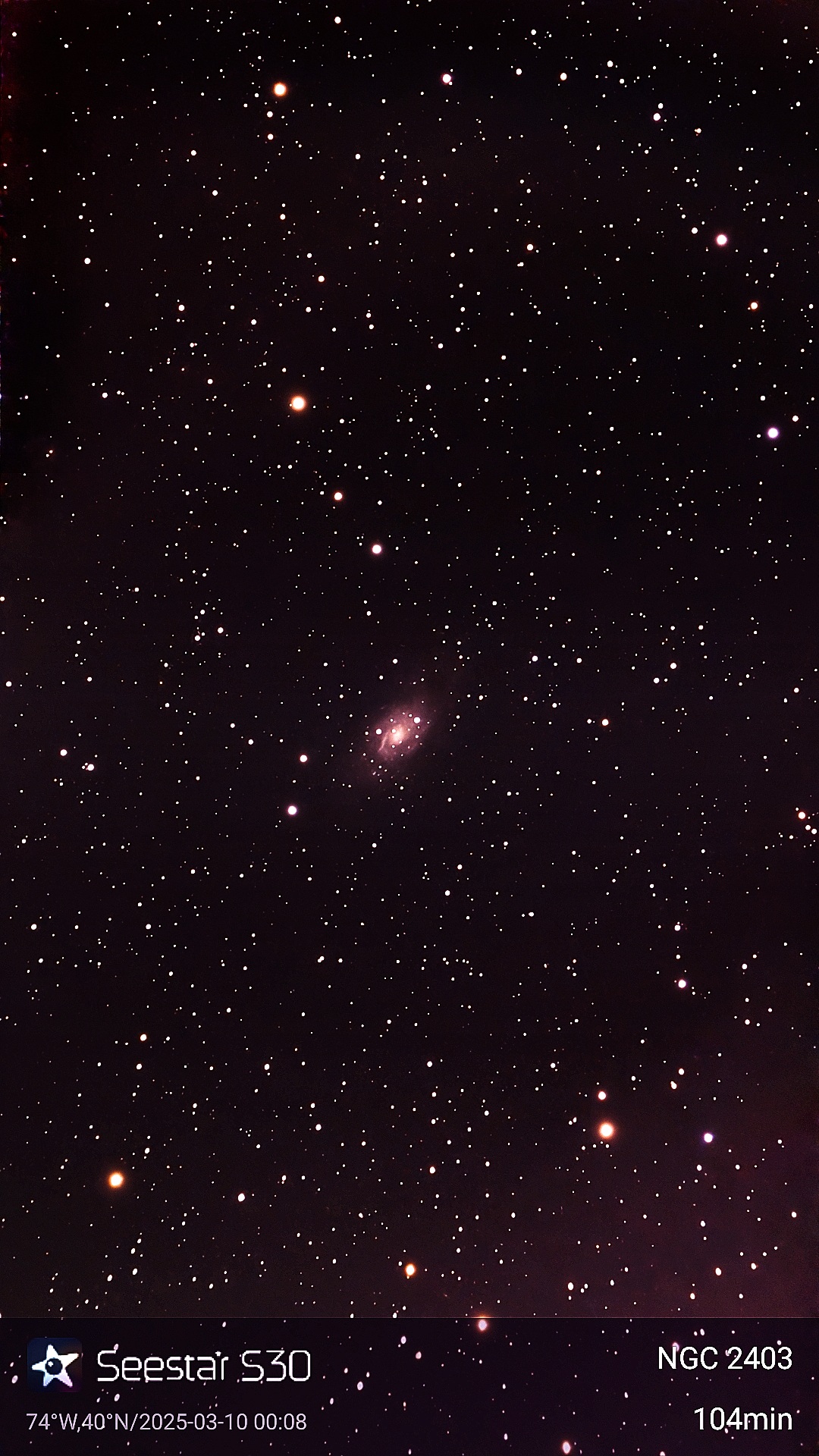
NGC 2403 is a spiral galaxy in the constellation Camelopardalis, but I’m impressed by how the Seestar S30 manages to capture it despite some heavy light pollution during the night I tried to image it. With 104 minutes of imaging, it draws out the distinct formation of the spiral galaxy.
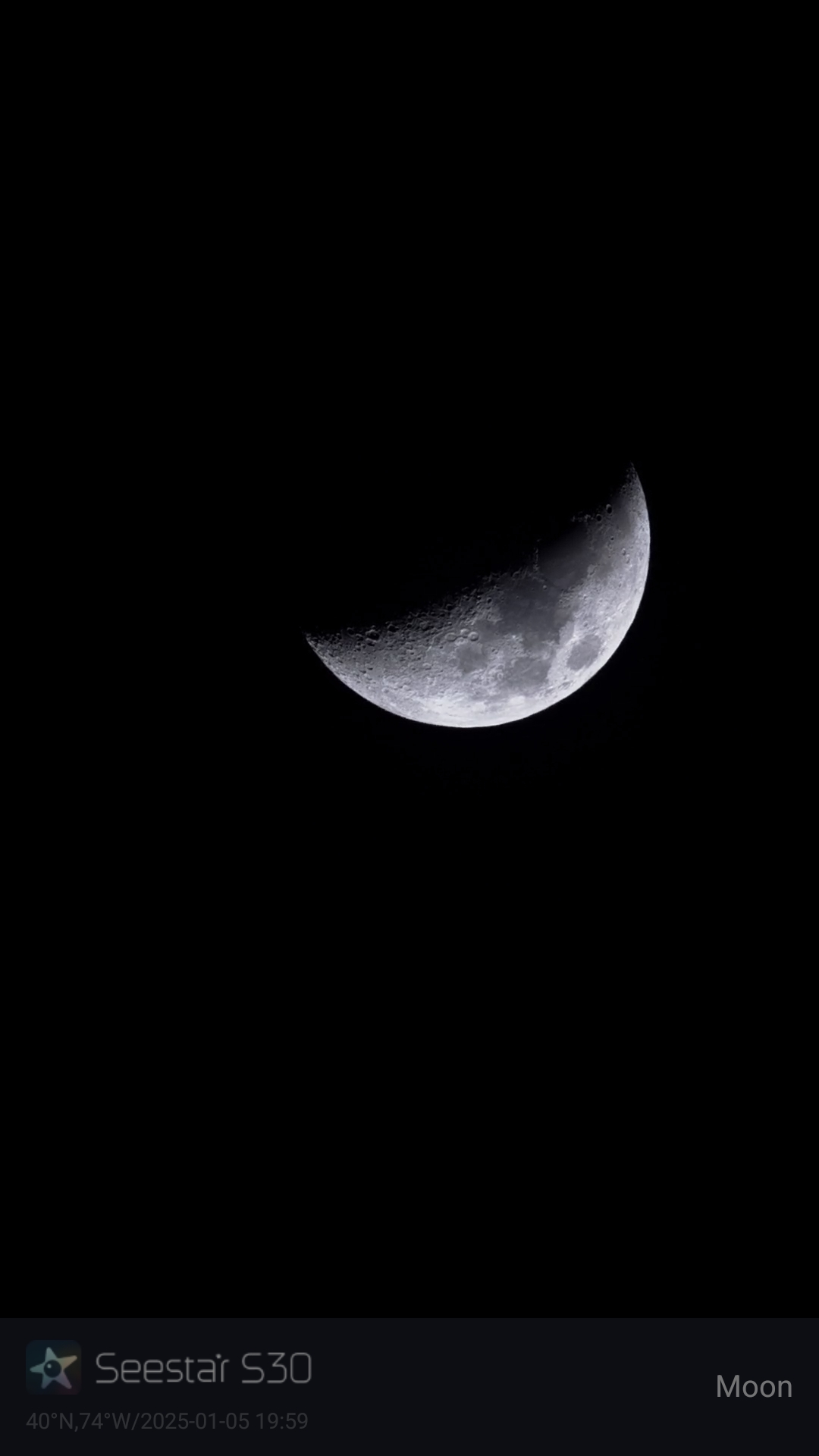
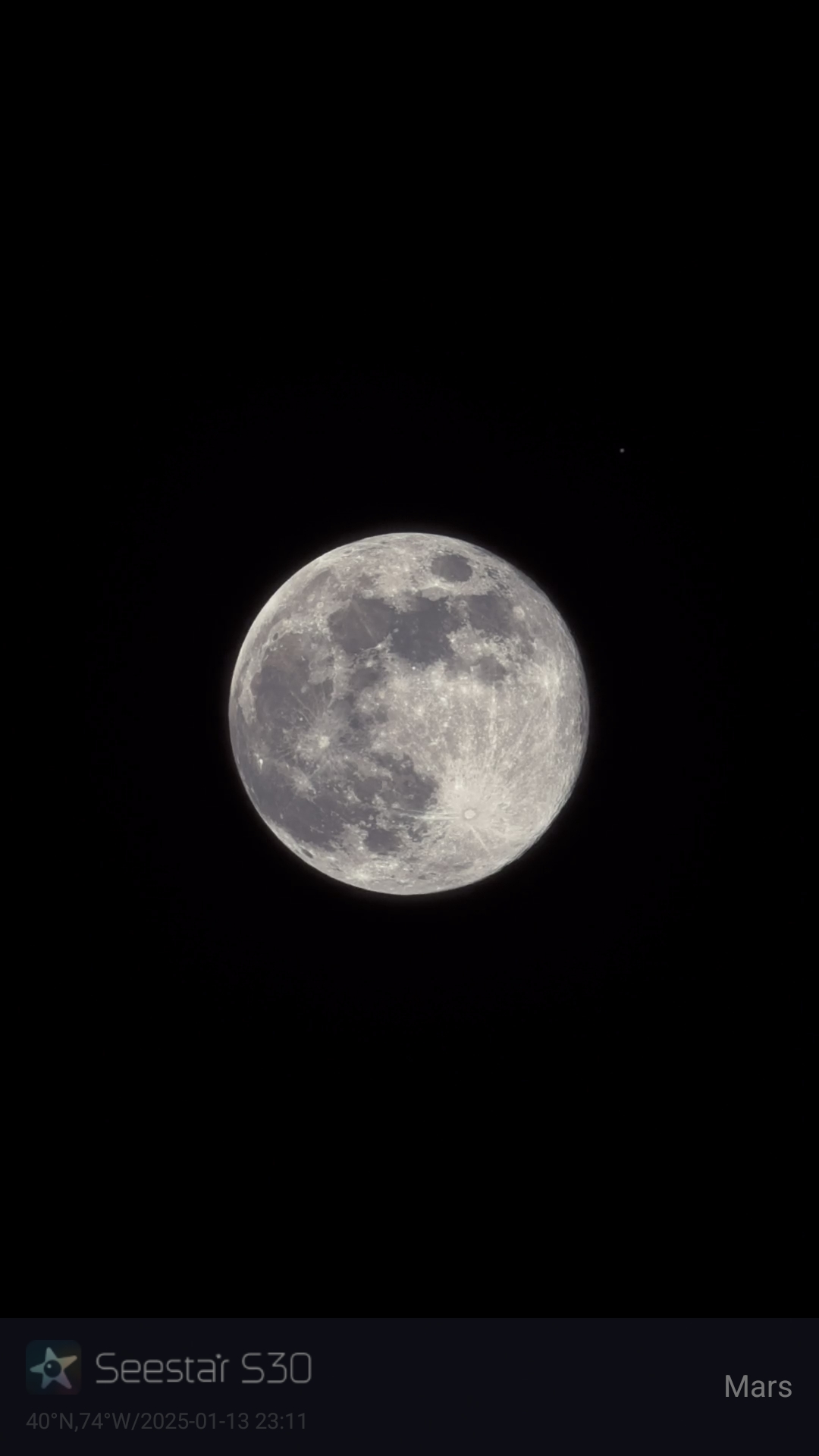
The Seestar S30 is also a champ at capturing proper moon shots, unlike some of the AI-assisted images that today’s best camera phones often produce. I love how I can see the craters in the first photo above, while the second one of the full moon also manages to capture Mars to the northeast.
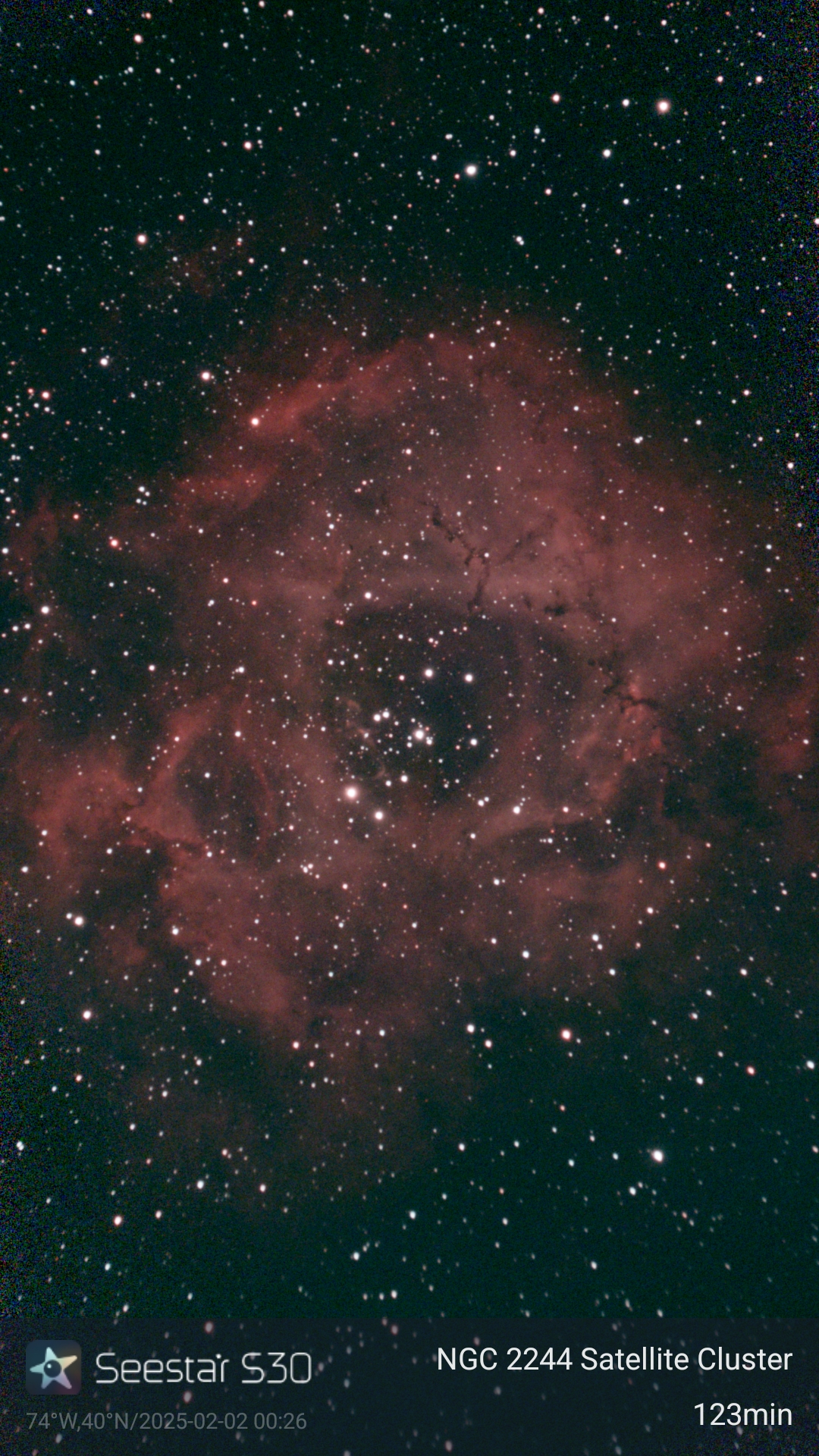

And finally, there’s my favorite shot of them all: NGC 2244 the Rosette Nebula. Again, the 150mm focal length of the Seestar S30 allows me to better capture more of it. The raw shot looks amazing on its own, but the amount of detail and color I’m able to pull out after editing it makes it even more breathtaking.
It’s made for solar eclipses, as well as nature
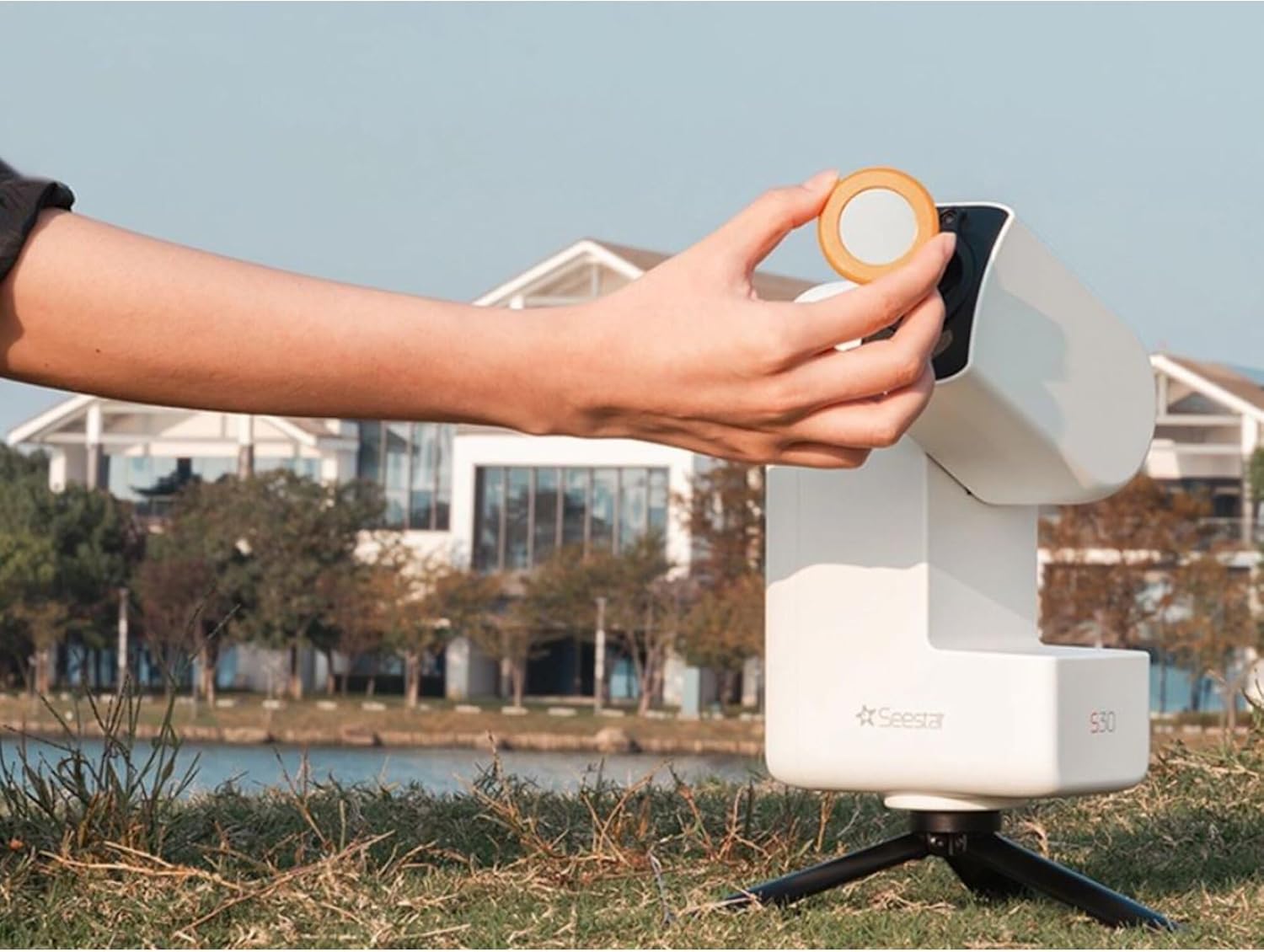
Included with the Seestar S30 is a solar filter that goes over the telescope’s lens to protect it from the sun. This is what I intend to use for the partial solar eclipse this weekend, since I’ve tried it before with the Seestar S50 — which impressively captures sun spots as well.
Beyond astrophotography, it’s also great for nature photography because it also has a separate wide angle lens to better frame a shot. There’s also an auto capture and tracking mode that lets you select a subject and the Seestar S30 will keep its sight on it.
These are all of the reasons why the Seestar S30 has become my favorite smart telescope. From its compact size, ease of use, outstanding performance at capturing astrophotography, it’s the ideal beginner telescope I’d recommend to anyone. Best of all, it’s unbelievably affordable at around $400.
More from Tom's Guide

John’s a senior editor covering phones for Tom’s Guide. He’s no stranger in this area having covered mobile phones and gadgets since 2008 when he started his career. On top of his editor duties, he’s a seasoned videographer being in front and behind the camera producing YouTube videos. Previously, he held editor roles with PhoneArena, Android Authority, Digital Trends, and SPY. Outside of tech, he enjoys producing mini documentaries and fun social clips for small businesses, enjoying the beach life at the Jersey Shore, and recently becoming a first time homeowner.
You must confirm your public display name before commenting
Please logout and then login again, you will then be prompted to enter your display name.
